Mercedes-Benz EQE revealed – electric E-Class equivalent is a smaller EQS with 292 PS, 660 km range
Mercedes-Benz has just mounted a full electric offensive ahead of today’s Munich Motor Show, revealing not one, not two, but five zero-emissions vehicles. By far the most important of these is this, the EQE – a dedicated electric sedan that sits a rung below the EQS and is thus more affordable.
This electric equivalent of the E-Class rides on the same Electric Vehicle Architecture as its larger sibling and shares many of the same components, technologies and design details. On the outside, the EQS bears a striking resemblance to the EQS, incorporating the EQ brand’s trademark “one bow” mono-box form, cab-forward proportions and short overhangs.
The “one bow” term refers to the unbroken sweeping line that runs from the front end through the glasshouse to the rear, with the A- and C-pillars pushed far forwards and rearwards to maximise cabin roominess. That much is evident when you look at the EQE’s slightly oddball dimensions.
Despite being around the same size as a CLS (4,946 mm long, 1,961 wide and 1,512 mm tall) and having a wheelbase 90 mm shorter than the EQS’, the distance between the front and rear wheels is still a not-insignificant 3,120 mm, which is longer than a standard W223 S-Class. It’s no surprise, then, that the EQE offers an 80 mm longer interior and 27 mm more front shoulder room than the current W213 E-Class.
At the front, the “Black Panel” incorporates the large closed-off grille (optionally available with an illuminated pattern featuring tiny three-pointed stars) and shapely trapezoidal headlights. Unlike the EQS, you can’t get a light strip on top of the grille to join the headlights, but the latter has daytime running lights that form a cross shape as part of the Digital Light option.
As per the new S-Class and EQS, the high-end headlights uses 1.3 million micro-mirrors to deliver over 2.6 million pixels of resolution. This allows them to project warnings, road signs and guide lines on the road ahead, as well as highlighting pedestrians and providing more precise high beam blocking. The grille hides the driving assistance sensors, while a flap on the front left fender covers the windscreen washer filler.
Moving to the side, the clean surfacing, door skin-mounted side mirrors, pop-out door handles and aerodynamically-optimised 19- and 20-inch alloy wheels combine with the front end seals and smooth underbody to improve aero efficiency – although Mercedes declined to release a drag coefficient figure. Extensive sealing along the sides (including around the frameless windows) and foam-filled body cavities also help reduce wind noise, further minimised through the optional acoustic glass front side windows.
The rear end houses the full-width LED taillights with the EQS’ three-dimensional helix design, along with a prominent spoiler lip. For the first time, the aerials are hidden underneath the bodywork, helping to further clean up the design. Electric Art and AMG Line styling packages are available, the latter adding the usual aggressive front and rear bumpers.
Stepping inside (through the optional automatically-opening driver’s door), you’ll find that the EQE again takes after the EQS, with the optional full-width MBUX Hyperscreen taking centre stage. This consists of a 12.3-inch instrument display, a 17.7-inch OLED centre touchscreen and another 12.3-inch OLED passenger touchscreen, all covered by a single piece of scratch-resistant glass.
The latest Mercedes-Benz User Experience (MBUX) incorporates the climate controls and features a “zero layer” context-sensitive interface, with suggestions popping up at certain times thanks to artificial intelligence. The front passenger can also watch videos or TV or browse the Internet through their own screen; a camera detects if the driver is looking over and dims the display.
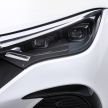
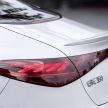
The “Hey Mercedes” voice control system has also been improved, now being able to distinguish between different occupant voices and allowing you to answer a phone call without needing the activation phrase and manipulate smart home devices. Music streaming services such as Spotify, Amazon Music and, more recently, Apple Music are also integrated into the infotainment system.
Elsewhere, you’ll find a slim air vent band that wraps around the dashboard, as well as turbine-style side vents. As standard, the interior is upholstered in Neotex, said to combine the feel of nubuck leather and neoprene, matched with either wood trim or an illuminated tristar pattern. The 64-colour ambient lighting system can also provide visual feedback for autonomous emergency braking and blind spot monitoring.
Speaking of which, these features come as standard as part of the Driving Assistance Package, with the optional Driving Assistance Package Plus adding the usual Distronic adaptive cruise control, lane centring assist and lane change assist, among others. Smartphone-enabled remote parking assist and memory parking assist (which remembers how to get in and out of a garage, for example) can also be specified, as can the pre-installation for Intelligent Parking Pilot, a Level 4 autonomous parking system.
Just two variants will be made available from launch, with Stuttgart only detailing one of those models – an EQE 350 with a single rear motor producing 215 kW (292 PS) and 530 Nm of torque. Further variants are planned, including 4Matic dual-motor all-wheel drive models and a performance version with around 500 kW (680 PS). A 90 kWh lithium-ion battery provides a WLTP-rated range of between 545 and 660 km, with the Navigate with Electric Intelligence function taking into account charging stations to provide the fastest route.
The EQE can accept up to 22 kW of AC charging, enabling the battery to be juiced up in 4.25 hours (8.25 hours with an 11 kW charger). Alternatively, you can plug the car in with up to 170 kW of DC fast charging power, topping up the battery in 32 minutes and providing up to 250 km of extra range in just 15 minutes. The battery itself is made up of less than 10% cobalt, making it more sustainable.
Suspension consists of a four-link front axle and a multilink setup at the rear, with Airmatic air suspension and rear-wheel steering (up to ten degrees) available as an option. Global sales of the EQE will commence starting from the middle of next year.
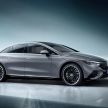
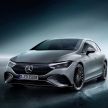
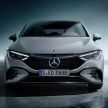
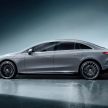

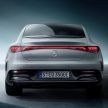
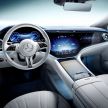
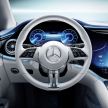
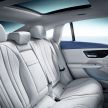
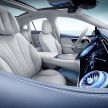
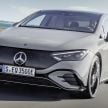
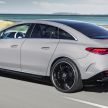
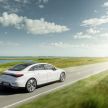
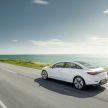
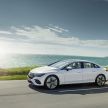
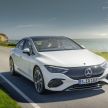
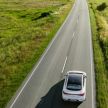
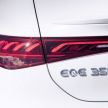
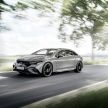
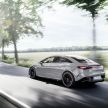
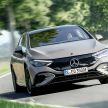
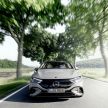
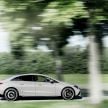
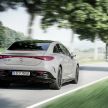
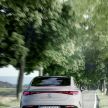
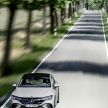


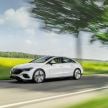
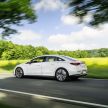
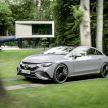
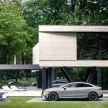
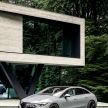
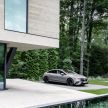
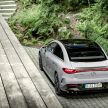
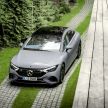
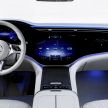
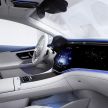
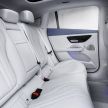
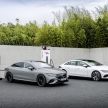
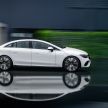
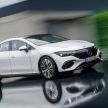
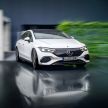
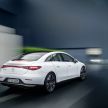
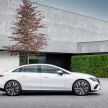
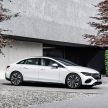
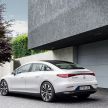
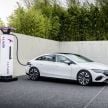
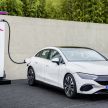
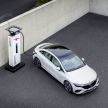


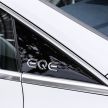
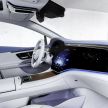
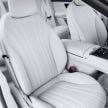
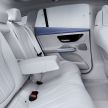
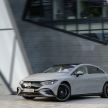
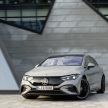
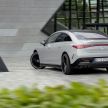
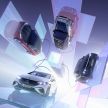
The post Mercedes-Benz EQE revealed – electric E-Class equivalent is a smaller EQS with 292 PS, 660 km range appeared first on Paul Tan's Automotive News.
from Paul Tan's Automotive News
Read The Rest:paultan...


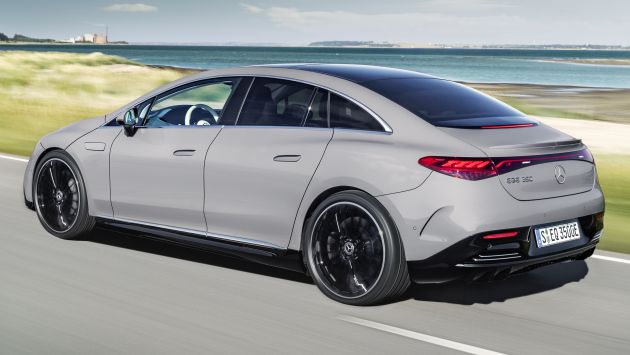
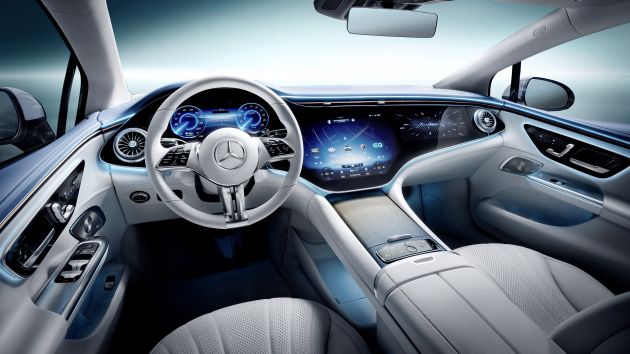
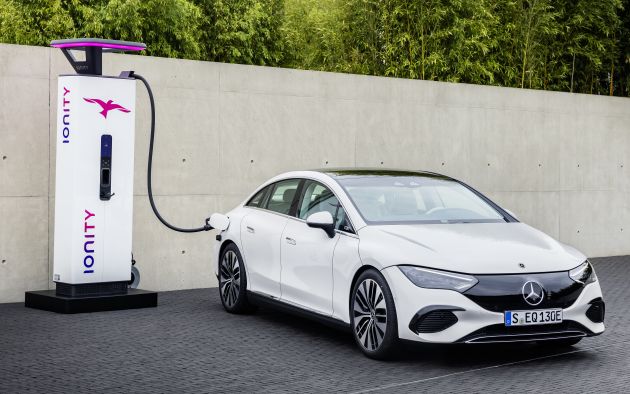

Post a Comment